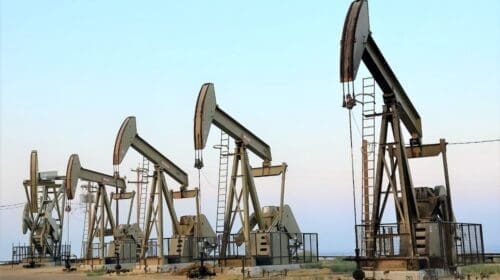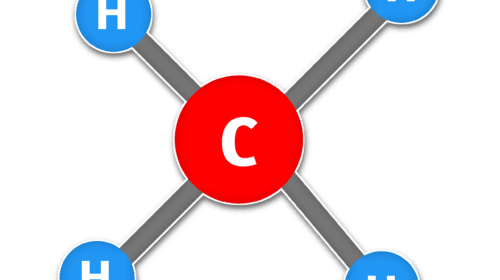While most people do not like change, the offshore oil and gas industry must maintain compliance and openly embrace it. Mandated through the Safety and Environmental Management Systems (SEMS) criteria belonging to the Bureau of Safety and Environmental Enforcement (BSEE), companies operating offshore must adhere to and follow this process of integrating and managing operations conducted offshore. SEMS’ primary goal finds root in strengthening safety and environmental performance in parallel to reducing the rate and intensity of incidents.
Like a series of marching orders, SEMS provides provisions to guide companies to gain compliance and stay that way successfully. Those factors include 17 different elements, each dictating a specific regiment that must be followed.
Addressing altered work plans and modified personnel designations, the SEMS standard requires companies to develop and implement a process that serves as a blueprint of guidance. Known as a Management of Change program, the system applies to equipment, personnel, procedures, and materials.
Program Components
Companies must possess a robust Management of Change program. Any change being channeled to implementation must be thoroughly reviewed first. Specific items need to be included in the plan to allow for proper guidance. The technical basis for implementing a change needs to be weighed. Evaluations should be made on the level of impact the potential change can instill on safety, health, and marine environments.
To remain on track and ensure proper completion of change implementation, a time should be dictated and followed. Management approval must be set in place to track, review, and manage the change procedure properly. Verbal approvals cannot substantiate safe and proactive work.
Communication is an essential component of the Management of Change program. Any employee or contractor whose scope of work can be influenced by the change being put into place must be informed and trained before it is initiated in the field.
Replacement in Kind
The key to the Management of Change program is determining the type of change needed. While changes can be the same mechanically, they can also be different. A simple means to understanding this concept is to consider a practical scenario found in the field.
If a crew is using a 30-horsepower pump in the field and breaks, it is apparent that it will need to be repaired or replaced. If the decision is made to replace it, then a change is being considered, and they are changing that piece of equipment. If the crew removes the 30-horsepower pump and replaces it with another 30-horsepower pump, then the change made is defined as “Replacement in Kind.”
If the crew decides to replace that same 30-horsepower pump with a 60-horsepower version, then the change is not “Replacement in Kind.” Here is where the waters are muddy. If the change is not “Replacement in Kind,” then all of the steps and parameters must be followed to make the change safely. One cannot just loosen some bolts, make the swap, and move forward. A dangerous outcome not considered could occur.
The exciting and effective characteristic of the Management of Change program is that each proposed change receives equal attention. Before any action is taken, every suggested change must be examined and determined if its placement is “Replacement in Kind.” This process serves as an ideal example of proactive behavior instead of being reactive. The change examination nearly mirrors your basic industry hazard hunt.
Common Pitfalls
The offshore market is both intense and competitive. Great emphasis and focus are directed towards equipment as the industry brings specific standards to offshore work. It is easy to get wrapped up solely in equipment type and condition.
Personnel is just as crucial to the task at hand as the equipment itself. As a result, a change directed at personnel has equal importance. Companies conducting business offshore must adhere to a procedure for the work being undertaken. If that procedure stipulates that the job will consist of a supervisor and two technicians, deviation from crew makeup must go through the Management of Change process.
Changing that proposed crew makeup to a foreman and two technicians is not equal or “Replacement in Kind” to the original specification. It is here where companies find themselves once again in murky waters. Suppose the supervisor cannot go on the job. In that case, the company cannot deviate to the makeup of just three technicians without provisions being implemented as part of the Management of Change program.
In a certain sense, a loophole does exist. Suppose the specified crew makeup is identified as a foreman and three technicians. In that case, a project manager can replace the foreman, which would reign acceptable under the SEMS Management of Change standard. The project manager commands a greater level of experience and knowledge than the foreman, so their expertise is sufficient to comply with the “Replacement in Kind” provision. Just as procedures and equipment safe practices must be followed, personnel makeup must be addressed similarly.
Another standard error lies with equipment changes. A great effort can be made in drafting a legitimate change and possibly how equipment might be safely altered. The error comes into play with the equipment drawings. Any change to the equipment must be notated on the corresponding drawing, and that drawing must accompany the equipment in the workplace. So essentially, if a vacuum dehydrator has been safely modified under the guidelines of an approved Management of Change program and is shipped offshore for use, it cannot be put into service if the drawing is not shipped with it. This is a frequent oversight that can thankfully be overcome by just sending the drawing afterward, such as by way of an email. Loss of time and production still creeps in while waiting for that drawing’s arrival.
Summarizing
The SEMS standard can seem like a sharply detailed program making offshore operations difficult, but considering historical catastrophes and undesired outcomes, it can serve companies as an essential ally.
When considering its Management of Change provision, it serves as the best example possible of black and white job functioning. A change is either “Replacement in Kind,” or it is not. Remaining faithful to that definition significantly tips the scale in favor of a successful outcome without incident or injury.
To truly gain the outcome intended by the Management of Program, companies must take an honest look at the work being conducted and take a similar approach if a change is warranted. They say you cannot lie to yourself, and the same rings true in determining the consequences of change.
Nick Vaccaro is a freelance writer and photographer. In addition to providing technical writing services, he is an HSE consultant in the oil and gas industry with twelve years of experience. Vaccaro also contributes to SHALE Oil and Gas Business Magazine, American Oil and Gas Investor, Oil and Gas Investor, Energies Magazine and Louisiana Sportsman Magazine. He has a BA in photojournalism from Loyola University and resides in the New Orleans area. Vaccaro can be reached at 985-966-0957 or nav@vaccarogroupllc.com.
Oil and gas operations are commonly found in remote locations far from company headquarters. Now, it's possible to monitor pump operations, collate and analyze seismic data, and track employees around the world from almost anywhere. Whether employees are in the office or in the field, the internet and related applications enable a greater multidirectional flow of information – and control – than ever before.












